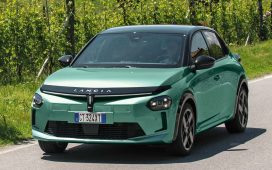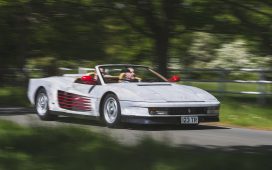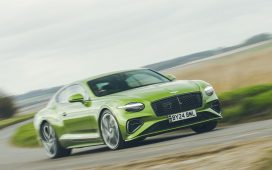Currently there is no greener and healthier vehicle than the E-Bike.
Light Vehicle Association (LEVA)
According to the Light Vehicle Association (LEVA), the U.S. imported around 250,000 e-bikes in 2019, 463,000 in 2020 and 790,000 in 2021, which already exceeded the amount of 652,000 electric cars and hybrids sold in the U.S. On top of being the greenest and healthiest of all vehicles, the e-bike might be America’s best-selling electric vehicle (EV). I could finish my blog post right here, because, apparently, the future has already arrived.
But of course, we have to expect a little more from The Future of Transportation than just a few numbers.
The Future of Transportation used to be Marty McFly’s Hoverboard, or was it the Moving Walkway; how about the Segway? Will the EV be king, or are we just waiting for the Roadable Aircraft? Of course, all those predictions are wrong. Hardly any of those transportation modes would solve the traffic problems we are having right now. None of those addresses today’s America’s physical and mental health issues. Of all those mentioned modes, only the pedelec moves users around and makes them healthier. By the way, we don’t want to discourage acoustic cycling here, but the regular bicycle had its chance to be the Transportation Mode of the Future back in the 1890s already. Therefore, this blog is dedicated to the new kid on the block: The modern pedelec, the electric pedal cycle, the pedal eBike, or US-short the e-bike.
E-Bike Class System
Early on, countries came up with a complicated class system for e-bikes, so technically and legally
Class I: pedal assist, speed limit of 20mph, no throttle allowed.
Class II: pedal assist, speed limit of 20mph, including throttle.
Class III: similar to Class II, pedal assist allows speeds up to 28mph. <750W
Class IV: no pedal assist; these are more like e-mopeds and e-motorcycles. >750W
It seems in America, anything with two wheels and an electric motor is called an e-bike, which has become quite confusing. In Europe, a bicycle that requires riders to pedal is called a pedelec (pedal-assisted electric bicycle) – these are the ones that make people healthier, only these are worth discussing here. Municipalities and police often pretend this class system is complicated, but it doesn’t have to be. California even has the OmniBike Bill (AB1909 2021) that would suggest throwing the first three classes into the same bucket. Except Class IV are still to be treated like mopeds or motorized vehicles.
Physical and Mental Health Benefits
According to the health guidelines of CDC, WHO, ACSM, or the EU, humans these days sit too much and hardly move the recommended 150 min per week. Sitting on an e-bike or e-moped without pedaling just adds to the sitting time. Riding a pedelec lets people replace car trips while sitting, which still counts as exercise. This can save a lot of money on car maintenance and gym memberships. Spending time outdoors is known to improve our mental health and make us smarter. Walking and biking count towards that time; driving does not. Gaining physical and psychological health and saving money, all while running a few errands, must be the triple-double of green transportation. [AARP: Would an E-Bike Get You Pedaling?]
Europe
But is e-biking really exercising, or is it cheating, as many have said? Let’s look at Europe, where there is more research available. Pedelecs (pedal electric cycles) started out with the stigma of being made for older adults, since seniors were the first to use them. Pedelecs were lowering the threshold for seniors and people with disabilities to get back onto bicycles; even hills became a non-issue.
The EU developed surveys and studies done by researchers from seven universities (Zurich, Vienna, Mol, Hasselt, Sweden, London, Barcelona, Dresden, Oxford). These researchers were comparing Metabolic Equivalent Task (MET) minutes of e-bike riders versus acoustic cyclists to see if e-bikers are cheating.
Here is what they found:
• Physical activity gains from active travel are similar in e-bikers and cyclists.
• E-bikers take longer trips, compared to cyclists.
• Substituting all car trips with e-bikes leads to a gain of 550 MET min/week.
More Research
Hannover Medical School has concluded that riding a pedelec regularly can drop the risk of a heart attack by 40% and cancer by 30%. Riding between 8-9 miles daily with a pedelec reduces cholesterol levels and lowers the risk of a fatty liver, dementia, and Alzheimer’s. It reduces the risk of experiencing obesity, heightened blood pressure and developing sugar or fat metabolism disorders by 50%. The study included participants riding electric bicycles and regular ones. The pedelec users were generally older and had a higher body mass index. Many were suffering from complaints like joint wear, high blood pressure or diabetes. Pedelec riders replaced more car trips with cycling trips than the other group did. They were also riding on average 6.5 min longer per ride and were more likely to reach 150 min of cycling per week. [Riding an electric bike drops heart and cancer risks]
AARP
AARP comes to similar conclusions regarding health. They define e-bikes as “equipped with small, battery-operated motors that can make the ride less strenuous. Although with many e-bikes, cyclists still must do at least some pedaling. Light electric vehicles afford Baby Boomers easy access to bicycle trails, trips, and tours.” [AARP: 5 Reasons You Should Try an E-Bike]
SMI and NADTC
Shared Mobility Inc., together with the National Aging and Disability Transportation Center, did research to better understand the mobility needs of older adults, people with disabilities, and veterans. [pedelecs] help to reduce physical stress on the rider and increase the distance they are willing to travel.
“The focus groups revealed there was a lot of need for recreational options and [improved] quality of life. Ultimately, [e-biking] gives folks more confidence to get outside and do things.“
[E-Bikes Increase Mobility Access]
Bikes Make Life Better
According to U.S.-based research, the majority of e-bike riders are 40-70 years old. Older adults and those with physical limitation are motivated by effort reduction, and parents like to take their kids to school and run short errands. Younger adults are catching up now, using e-bikes for an easier, quicker, cheaper commute.
Transportation Equity

E-bikes have clearly become a Transportation Equity tool. People who cannot ride anymore because of knee, hip, or heart problems are back in the saddle. They are also more likely to replace car trips with healthy bike trips; they ride longer and more often than regular cyclists do. Acoustic cycling often causes knee, hip, back, and neck problems in the long run. These ailments hardly ever exist with e-bikes. All in all, pedelecs might just be the healthiest choice available.
Peninsula Clean Energy (PCE)
PCE gave out e-bikes as a transportation equity project: “e-bikes show particular appeal for those on tight budgets due to the low operating cost – if they can afford the purchase price. The real story is that car trips are the number-one thing people are replacing, using e-bikes. Surveys show that, 94% of buyers reported replacing car trips with bike trips, 75% of trips were practical — like work, errands, friends and family — rather than recreational, 30% of respondents said the e-bike had become their primary transportation mode.“
E-Bike Bans
Globally and regionally, everybody seems to like the e-bike and seems to understand its positioning within the Future of Transportation. But All Politics Is Local, and local politics tend to think smaller. Bay Area jurisdictions like Half Moon Bay, Millbrae, Burlingame, Palo Alto, Mill Valley, MidPen and others have started to work on e-bike bans, providing the weirdest reasons. Some council members seemed mad at all cyclists, so they are banning old people and kids, but regular cyclists can still speed. They banned seniors on Class 1 Bikeways – the one that is for ‘All Ages and Abilities’ (AAA), but didn’t provide alternative AAA routes. These cities are part of regional groups (e.g., BAAQMD, PCE, SMCTA, C/CAG) that are promoting the impact of e-bikes on health, sustainability, and equity. Yet, they stop the green future of transportation in its tracks, because … you know … they want to.
As CalBike, SVBC and some other 20 bicycle advocacy groups pointed out, the bans have nothing to do with safety. When these cities had a straight route to improve their – quite miserable – records on Sustainability, Equity and Vision Zero, these council members and their BPACs argued in circles to justify discrimination and bullying.
Which leads right into a future blog topic:
Why E-Bikes won’t be the Future of Transportation.
More Information:











